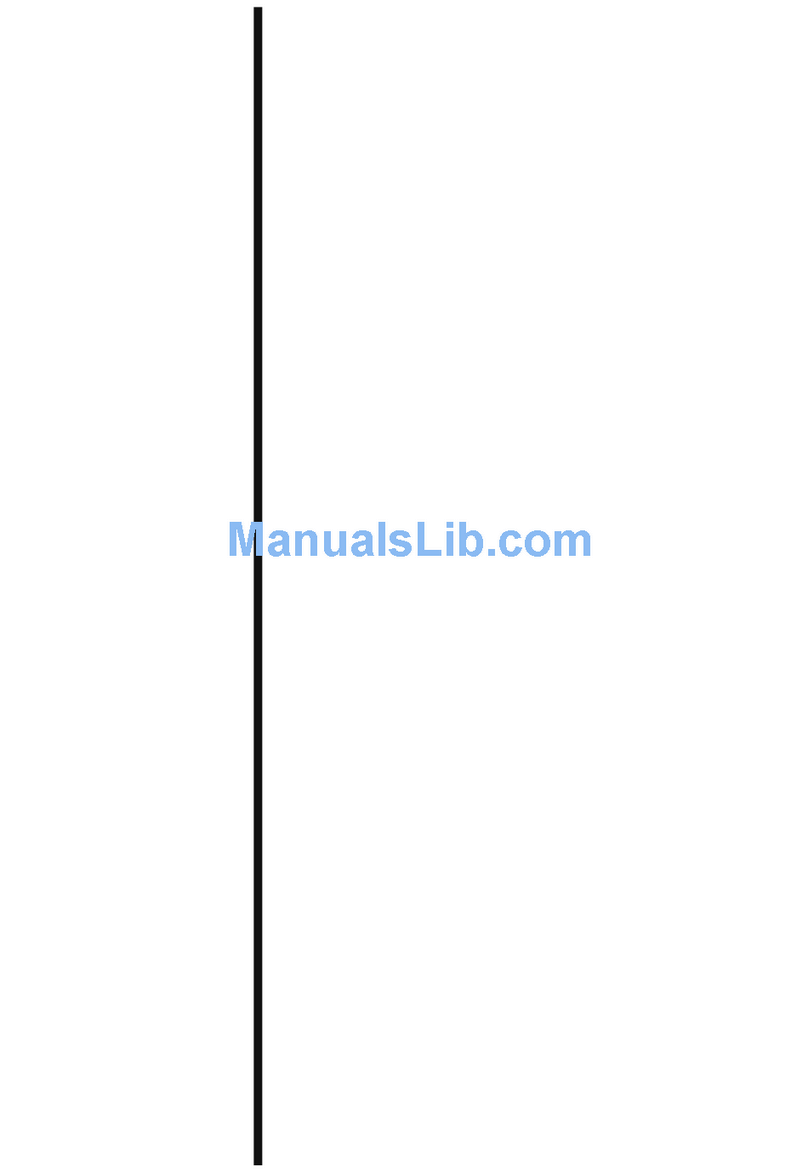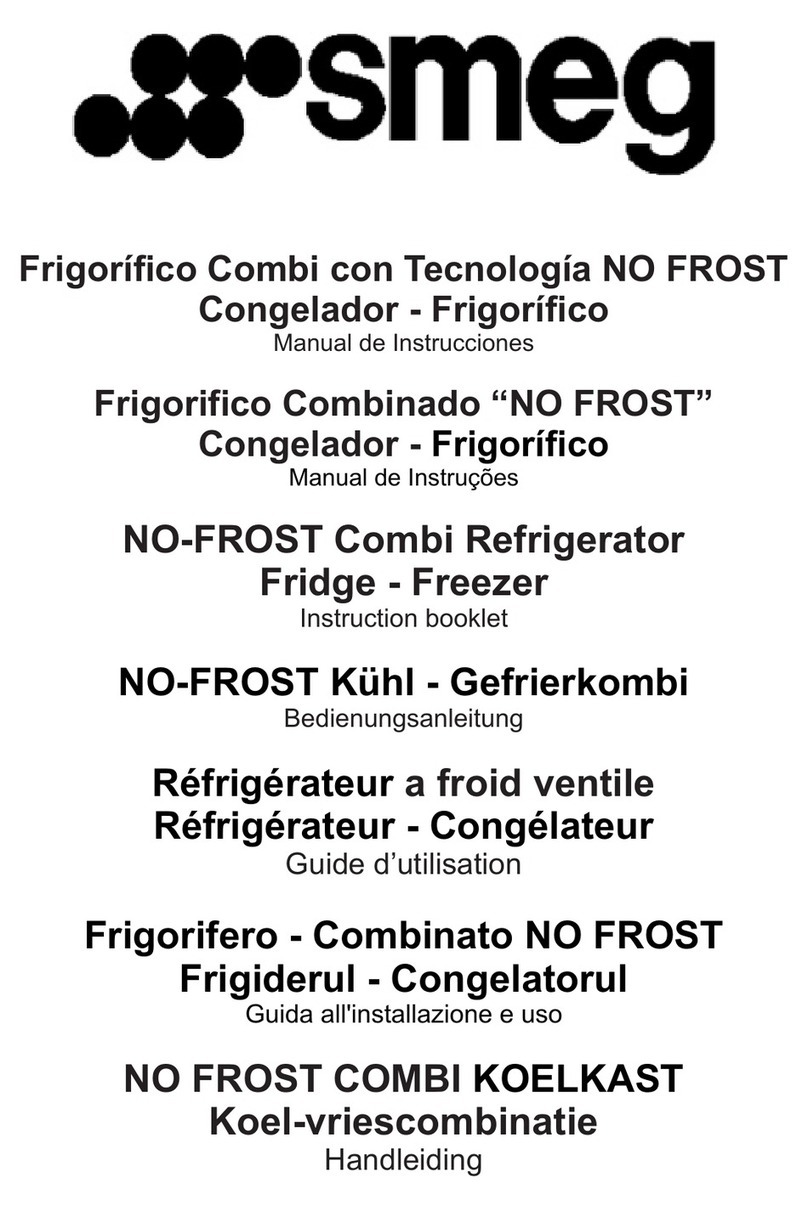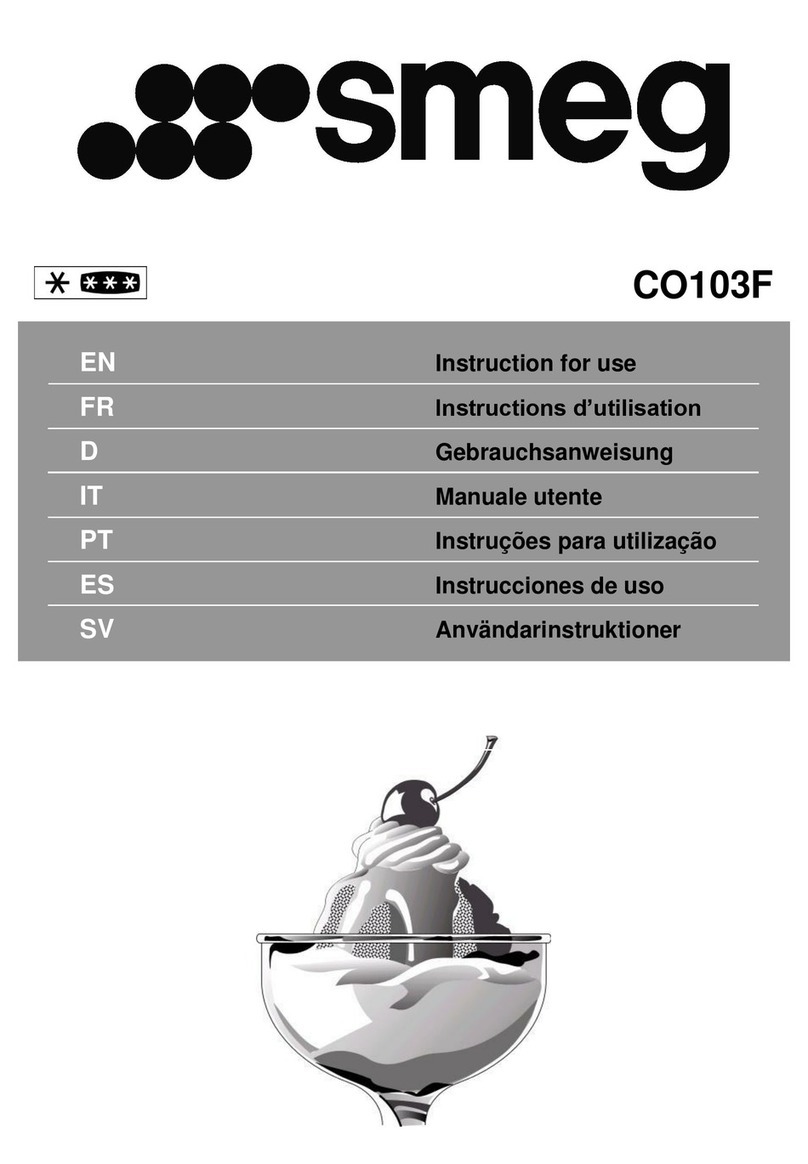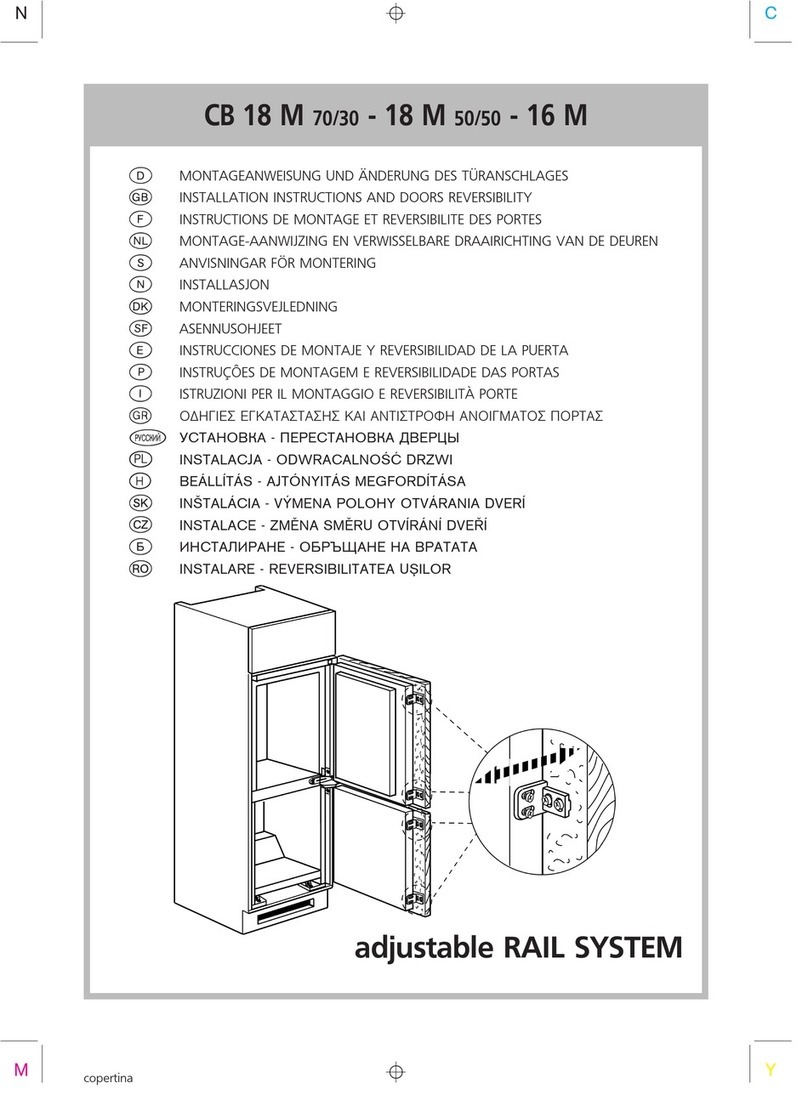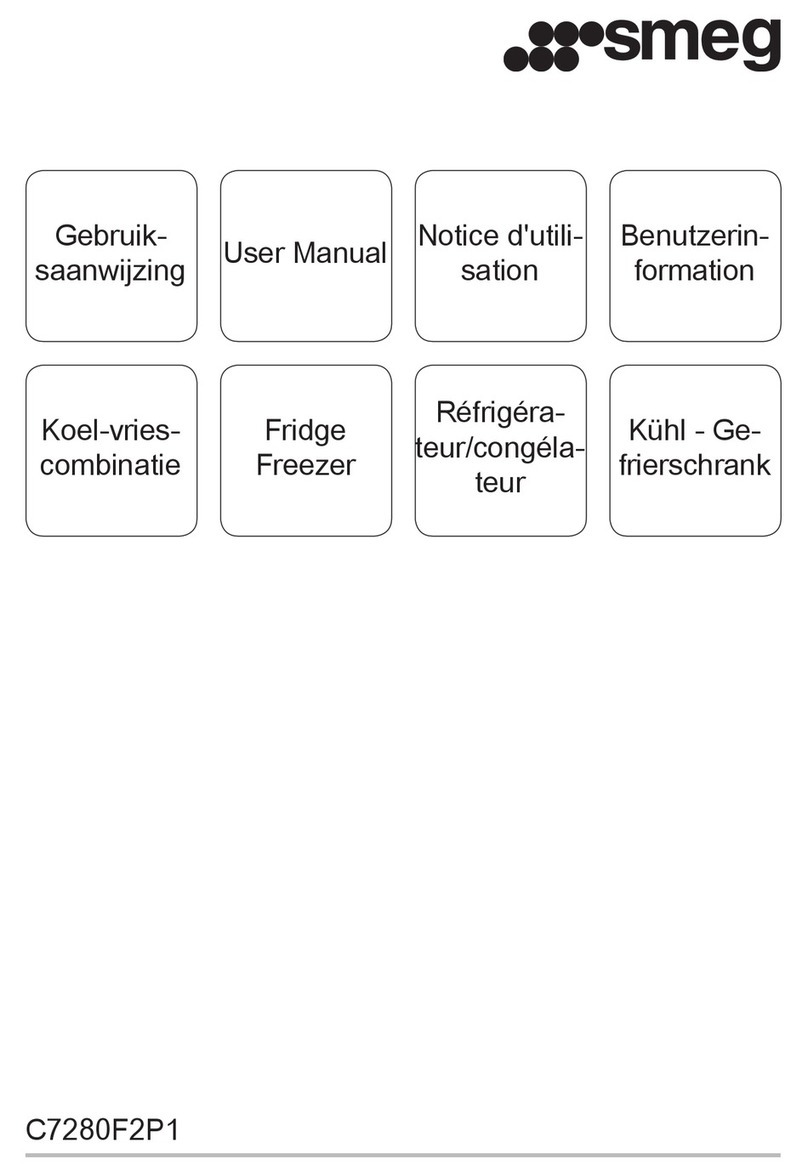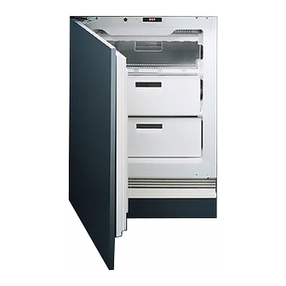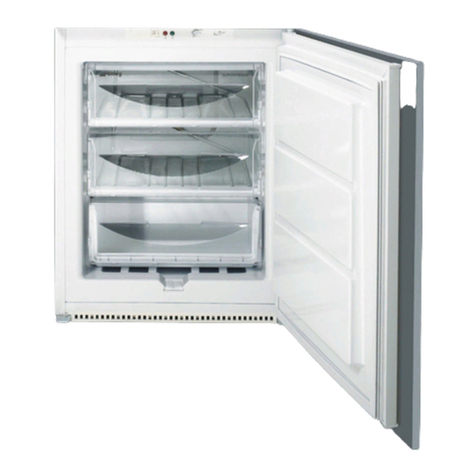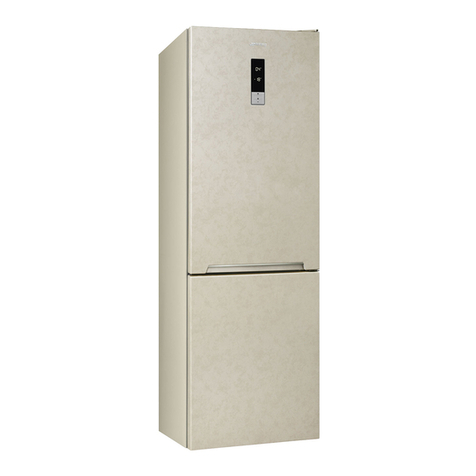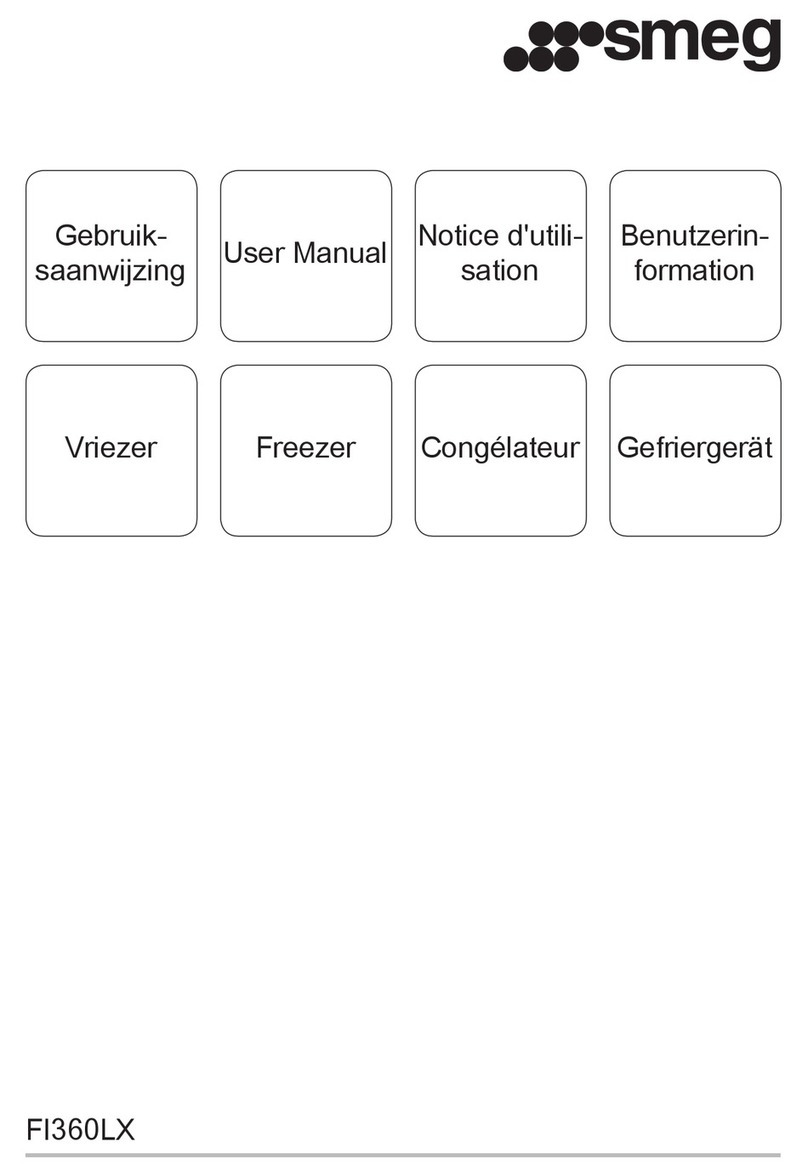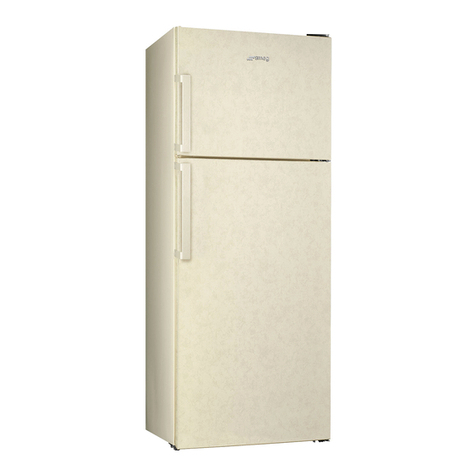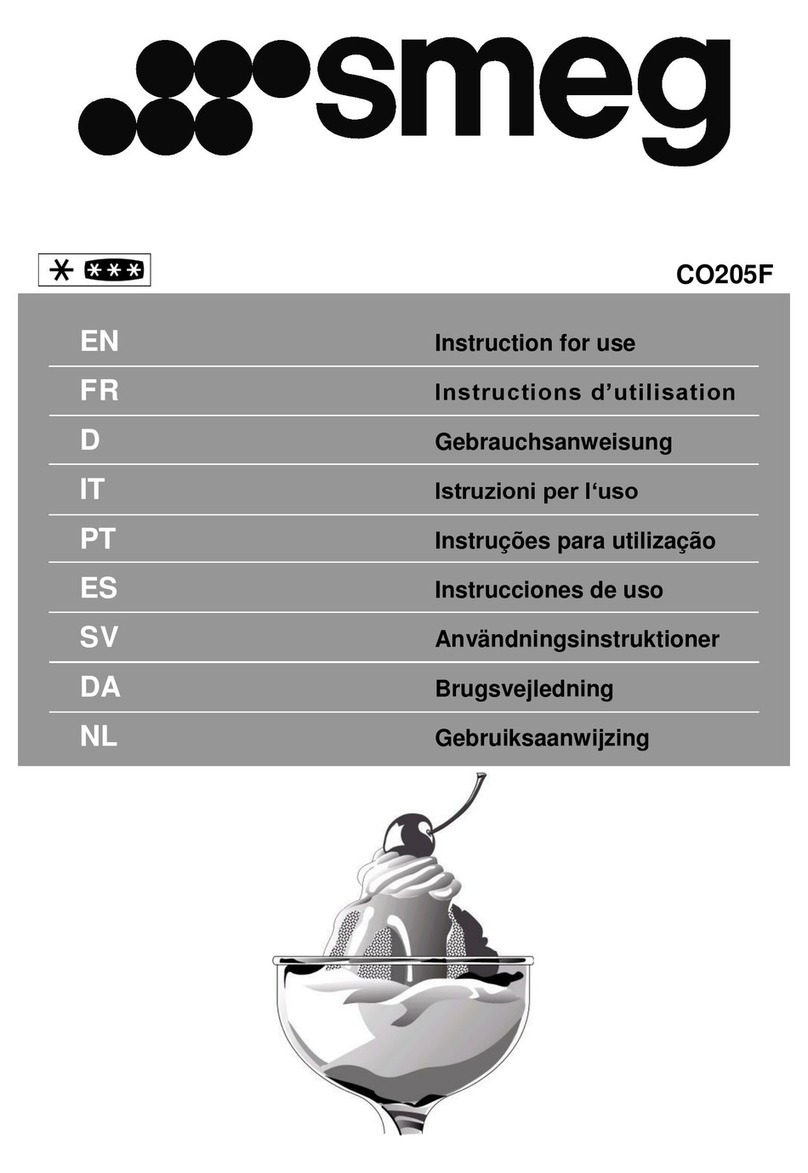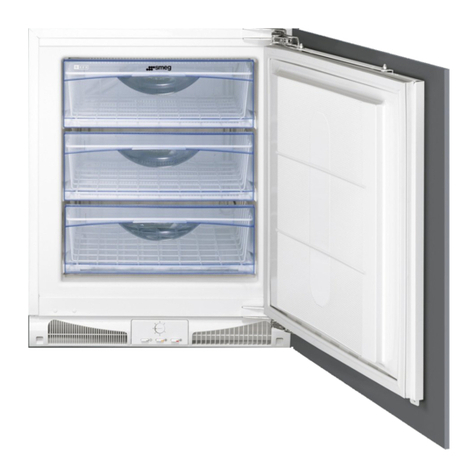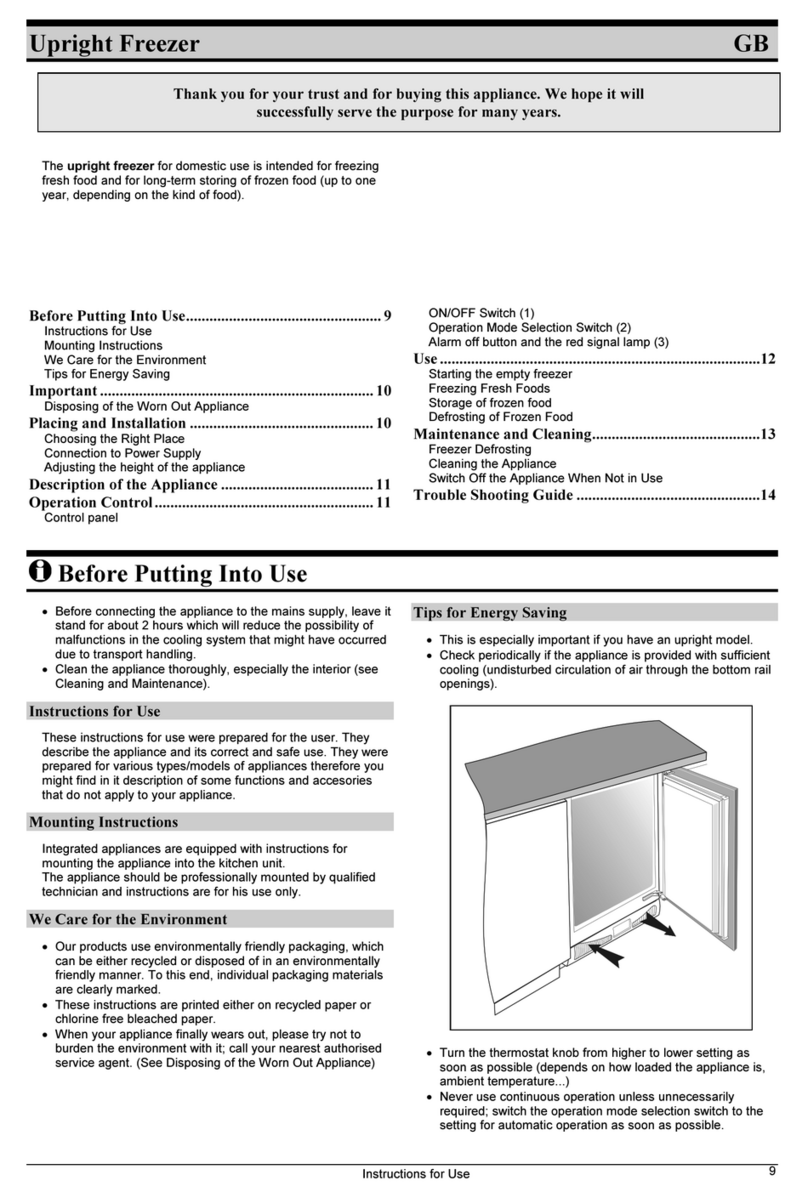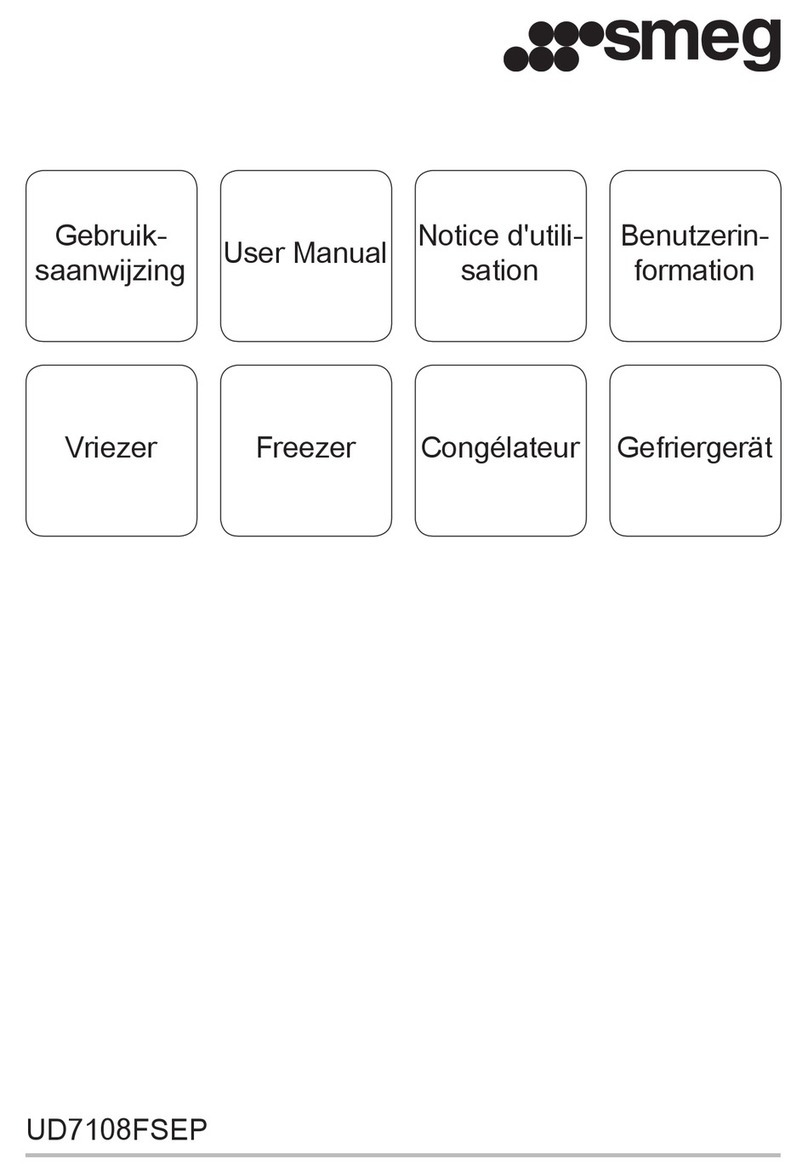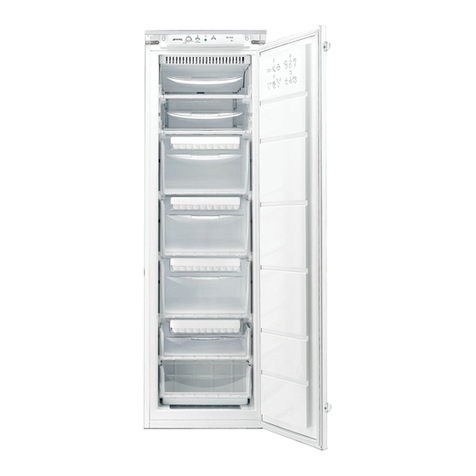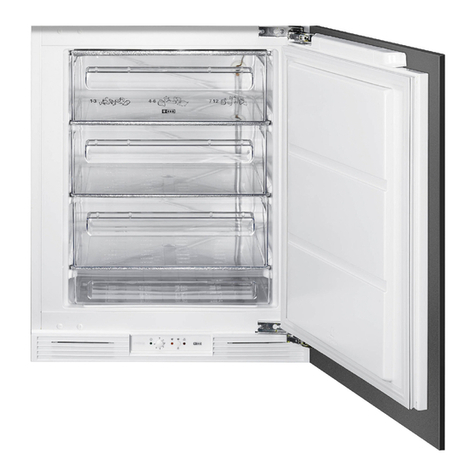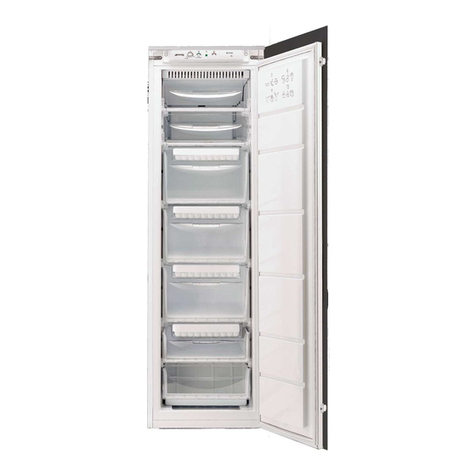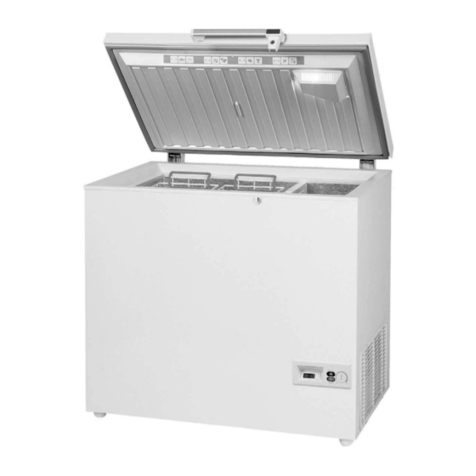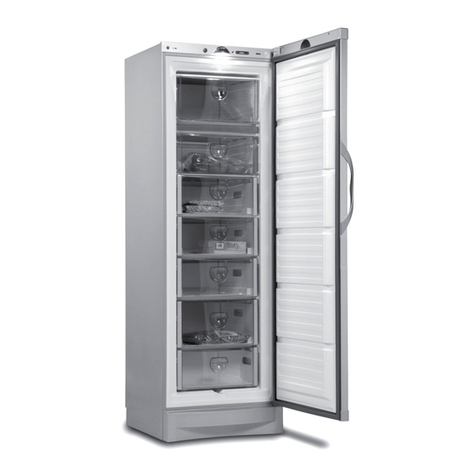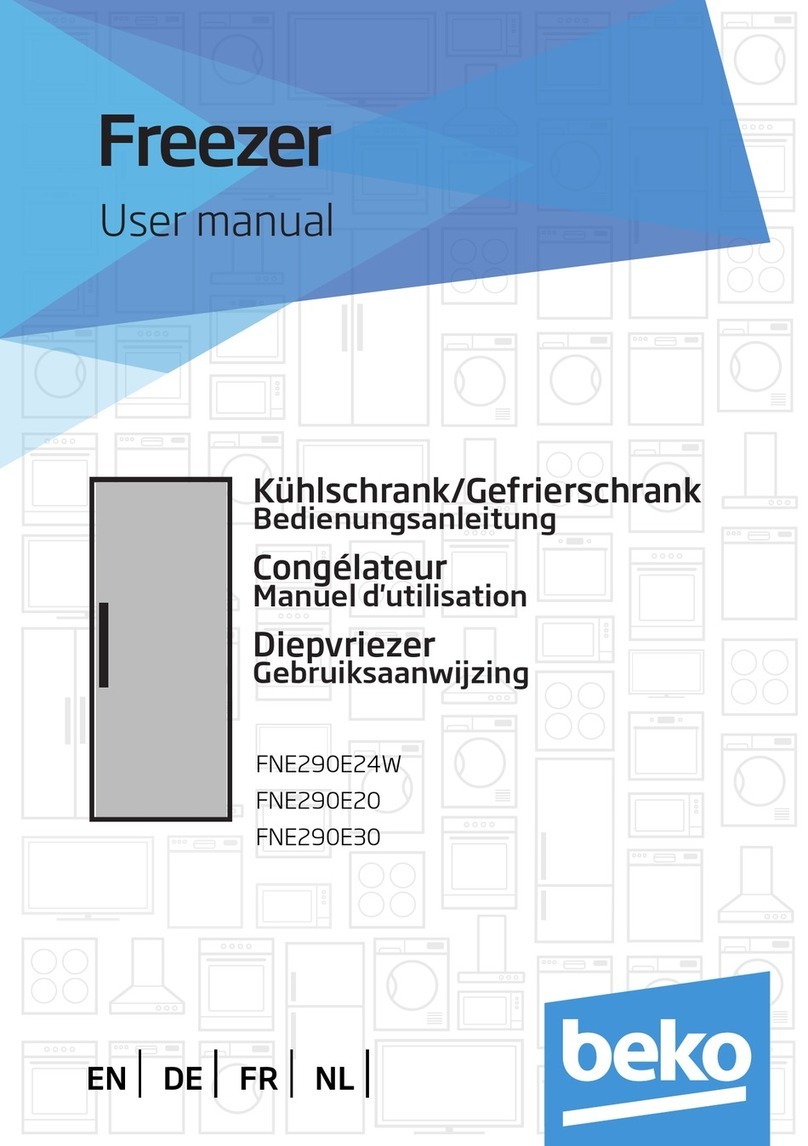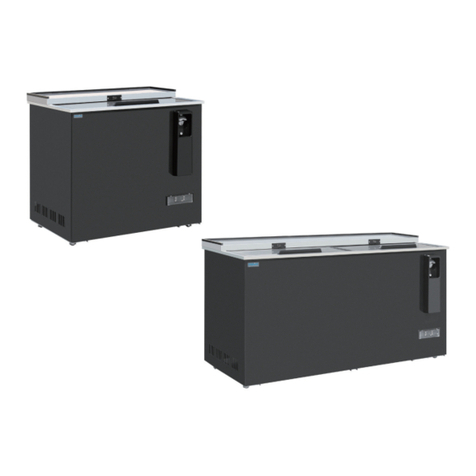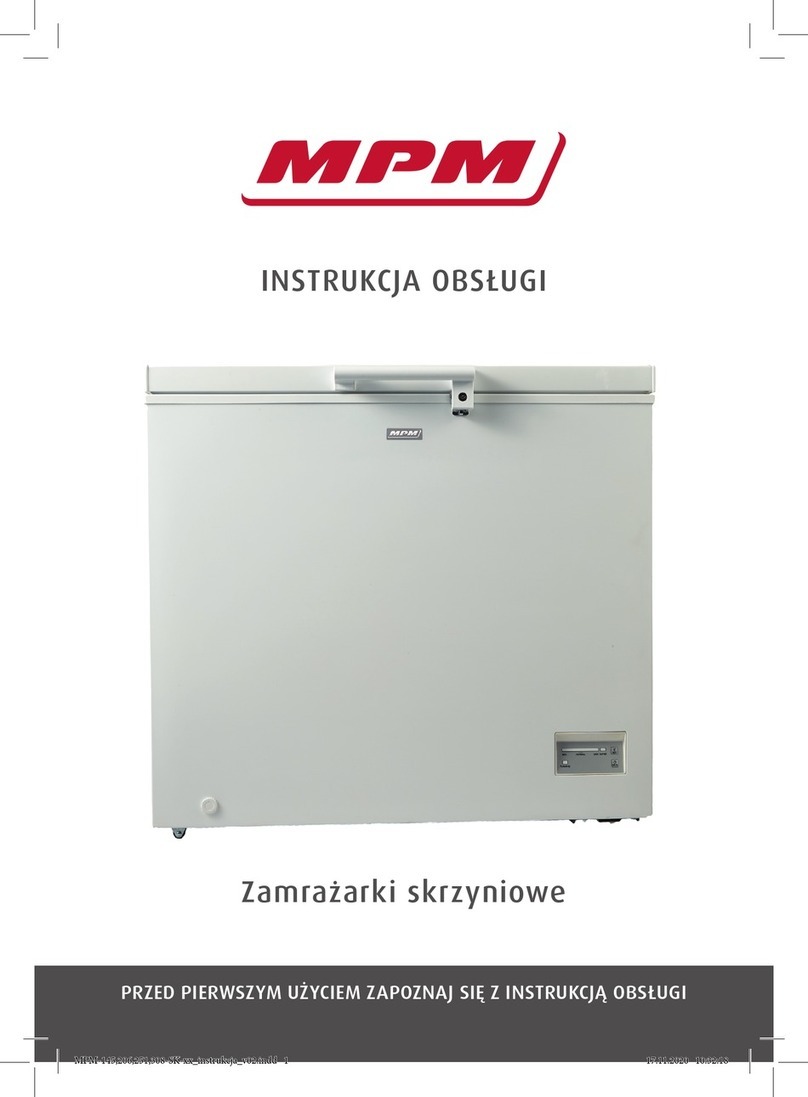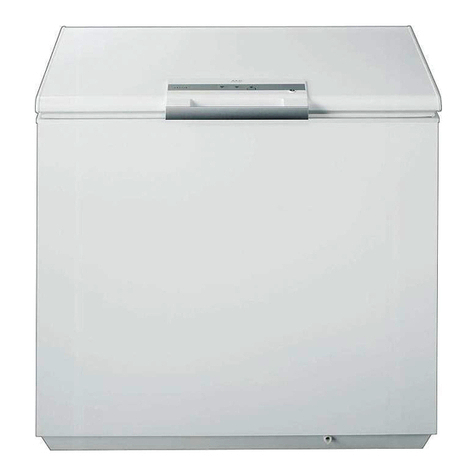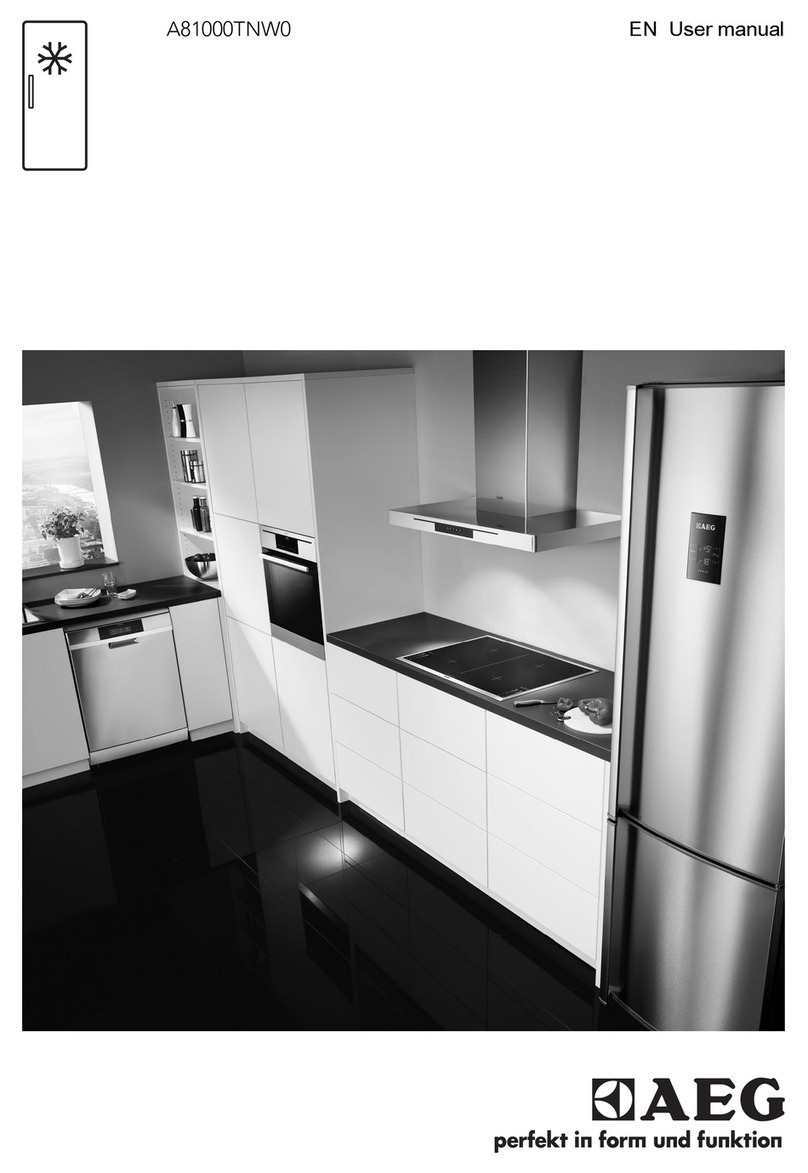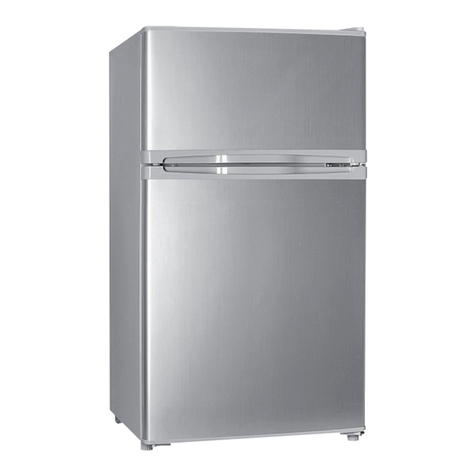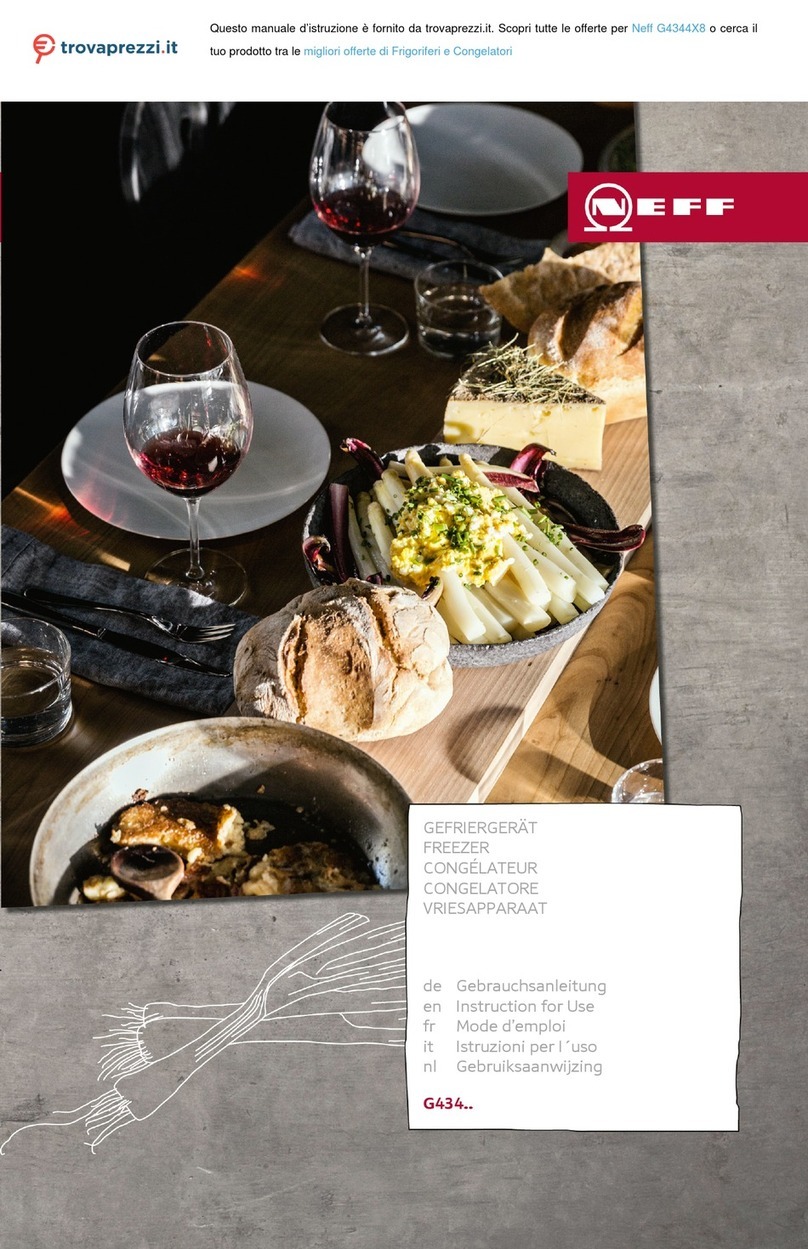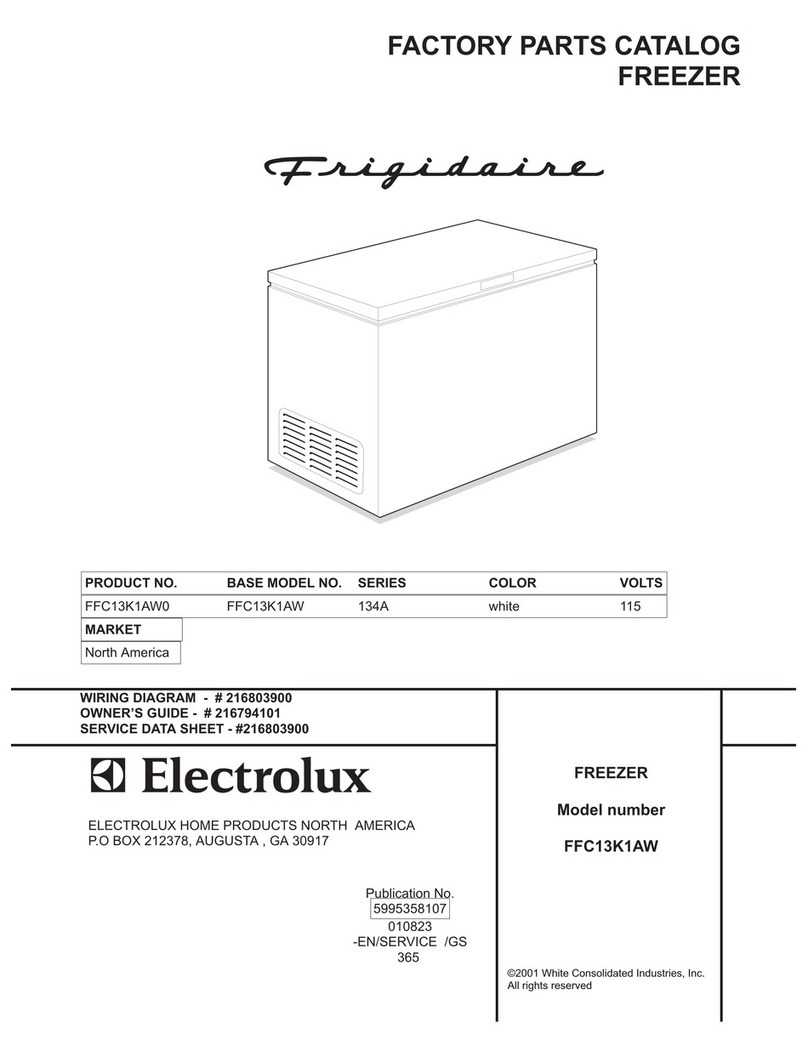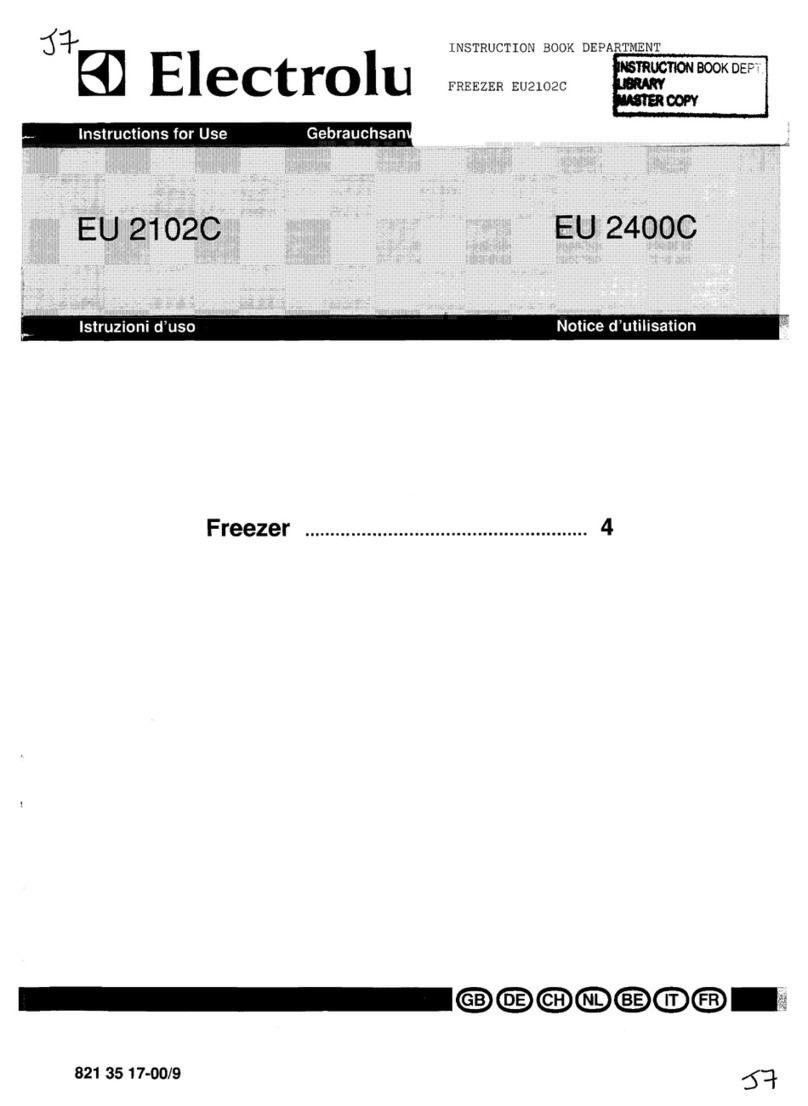
EN - 5 -
• Do not touch frozen goods with wet hands. Do not eat ice-cream or ice cubes
immediately after you have taken them out of the ice-making compartment.
• Do not re-freeze frozen goods after they have melted. This may cause health issues
such as food poisoning.
• Do not cover the body or top of freezer with lace. This affects the performance
of your freezer.
• Secure any accessories in the freezer during transportation to prevent
damage to the accessories.
• When the door of the freezer is closed,
a vacuum seal will form. W ait for
about 1 minute before reopening it.
• This application is optional for easy
op en ing of the door. W ith this
application, a little condensation may
occur around this area and you may
remove it.
• Do not use plug adapter
Installing and operating your freezer
Before starting to use your freezer, you should pay attention to the following points:
• The operating voltage for your freezer is 220-240 V at 50Hz.
• W e do not accept responsibility for any damages that occur due to ungrounded
usage.
• Place your freezer where it will not be exposed to direct sunlight.
• Your appliance should be at least 50 cm away from stoves, gas ovens and heater
cores, and at least 5 cm away from electrical ovens.
• Your freezer should never be used outdoors or exposed to rain.
• When your freezer is placed next to a deep freezer, there should be at
least 2 cm between them to prevent humidity forming on the outer
surface.
• Do not place heavy items on the appliance.
• Do not place anything on your freezer, and install your freezer in a
suitable place so that at least 15 cm of free space is available above
it.
• Use the adjustable front legs to make sure your appliance is level and stable. You
can adjust the legs by turning them in either direction. This should be done before
placing food in the freezer.
• Before using your freezer, wipe all parts with a solution of warm water and a teaspoon
of sodium bicarbonate, then rinse with clean water and dry.
Place all parts in the freezer after cleaning.
• Install the plastic distance guide (the part with black vanes at the rear)
by turning it 90° (as shown in the figure) to prevent the condenser from
touching the wall.
• The freezer should be placed against a wall with a free space not
exceeding 75 mm.
